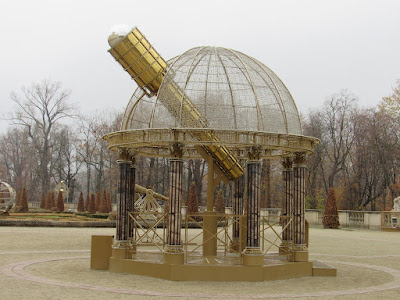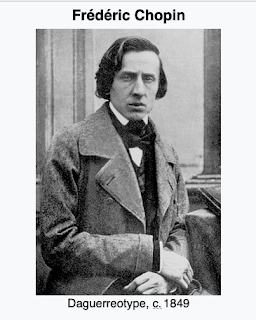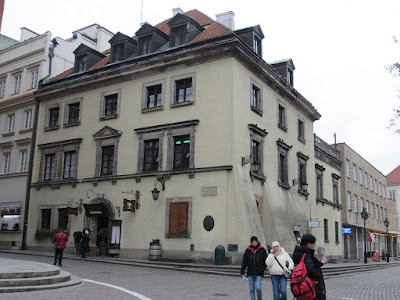Warsaw was a difficult place to be. The weather was cold and overcast. We had traversed a flat terrain for six hours to get there from Berlin, 325 miles away, on a dreary, wet, foggy day. Learning about Warsaw's history was depressing and being there felt as though the weight of this history bled onto us. If ever the concept of "sense of place" was validated, Warsaw was it. However, the post-war resurrection of Warsaw is yet another chapter about the triumph of the human spirit in the face of utter destruction; it is a testament to the people's grit and a love for their city.
First, the context. Conquering tribes have rumbled across Poland for centuries and made it their own. Sometimes, Poland didn't even exist! World War II was especially difficult for Poland when the Germans marched in from the west on September 1, 1939 and declared the country theirs. Sixteen days later the Soviets invaded Poland from the east. Bombings commenced, and the people lost their homes, farms, cities, churches, and families. This would go on for six years followed by the Soviets' control of Poland 1945-91 as one of their Eastern bloc countries.
Actually, the Nazis had planned to raze the city as part of the Nazis' Germanization of Central Europe. As it became apparent that the Nazis would lose the war in late 1944, they abandoned their plans of colonizing the East. Thus, the destruction of Warsaw did not serve any military or colonial purpose; it was carried out solely as an act of reprisal, especially after the Warsaw Uprising of 1944, which was led by the Polish Resistance. The Nazi leaders were so infuriated that they deliberately demolished, burned, and pillaged the vast majority of the city's museums, art galleries, theaters, churches, parks, castles and palaces as if to wipe out Warsaw's entire cultural heritage.
Source: Ciborowski, Adolf (1969), A City Destroyed and Rebuilt. He was a Polish architect, urban planner, and politician.
The destruction of Warsaw was practically unparalleled during the war. "Perhaps no city suffered more than Warsaw
during World War II", said historian Alexandra Richie. "The
destruction of Warsaw was unique even in the terrible history of the
Second World War".
People fled the destruction. However, after the war they returned to their city and built a new one between the 1950s and 70s--without much help from either the Western allies or their new Soviet conquerors. Old Town was thoroughly reconstructed and New Town was partially restored to its former state.
Although the Soviets had industrialized, urbanized, and improved the Poland's standard of living, the people also had to endure Stalinist repression, social unrest, political strife, and severe economic difficulties. That would end with the fall of the USSR and the withdraw of Soviet troops from Poland. The Communist Polish government also lost out and the rise of democracy, free and fair elections, and freedom replaced it. As a result, Warsaw today is a vibrant, bustling, modern city.
This blog will focus on Warsaw and World War II.
Warsaw Ghetto
 When I was in high school, I read the John Hersey novel, The Wall, which chronicled life in the Warsaw Ghetto. I was anxious to visit this area when we arrived in Warsaw, but was disappointed. The ghetto had been leveled during World War II and was now a serene park with a Jewish museum and memorials surrounded by reconstructed streets and buildings.
When I was in high school, I read the John Hersey novel, The Wall, which chronicled life in the Warsaw Ghetto. I was anxious to visit this area when we arrived in Warsaw, but was disappointed. The ghetto had been leveled during World War II and was now a serene park with a Jewish museum and memorials surrounded by reconstructed streets and buildings.
The Ghetto was established in October 1940 after Hitler invaded Poland on September 1, 1939. The siege continued until September 29, It killed 30,000 people and destroyed 10 percent of the city.
Thousands of Jews and other refugees from the Polish-German front escaped to Warsaw. Meanwhile, Jews were forced into labor to clear the bomb damage. Their bank accounts were frozen. They had to wear a six-pointed yellow star, were forbidden to take public transport or to pray in public due to the "risk of spreading epidemics". Because the Nazis limited food and medical supplies, the black market, smuggling, and illegal trade emerged. Many people died from typhus and starvation.
On April 1, 1940 construction of a ghetto wall commenced to hem in approximately 460,000 Jews, which was about 30% of Warsaw's population
at the time. It was completed by November 1940. Other undesirables, like the Romani people (Gypsies) were also confined there.

A Warsaw Ghetto Heroes Monument is near the place where the German troops entered the ghetto on 19 April 1943.

Palace Wilanów

The left and right wings of the palace were later added by Polish stateswoman Elżbieta Sieniawska who bought the palace in 1720. She followed King John's original blueprints by architect Augustyn Wincenty Locci. All subsequent owners changed the interiors of the palace, as well as the gardens and grounds, according to the current fashion and needs. In 1805, the owners Stanisław Kostka Potocki and his wife Aleksandra Lubomirska transformed the palace into a museum, one of the first public museums in Poland.
Only a fraction of King's art collection survive today among the museum's current holdings. However, subsequent owners re-established and enriched the collection with paintings making Wilnów is one of Poland's most important historical monuments. Around 3 million people visit the museum annually (2019). The palace and surrounding park in Wilanów also host cultural events and concerts.
The palace was one of the few buildings not destroyed by Poland's partitions and both World Wars so in that way we have a gift from the past that we can appreciate today. It remains a remarkable example of Baroque architecture.
 John III Sobieski (1629-96) was born into Polish nobility. He was a soldier and later a commander in the Khmelnytsky Uprising, the Russo-Polish War and the Swedish invasion known as the Deluge. He demonstrated his military prowess during the war against the Ottoman Empire and established himself as a leading figure in Poland and Lithuania. In 1674, he was elected monarch of the Polish–Lithuanian Commonwealth following the sudden and unexpected death of his predecessor, King Michael. King John's 22-year reign marked a period of the Commonwealth's
stabilization, much needed after the turmoil of previous conflicts.
John III Sobieski (1629-96) was born into Polish nobility. He was a soldier and later a commander in the Khmelnytsky Uprising, the Russo-Polish War and the Swedish invasion known as the Deluge. He demonstrated his military prowess during the war against the Ottoman Empire and established himself as a leading figure in Poland and Lithuania. In 1674, he was elected monarch of the Polish–Lithuanian Commonwealth following the sudden and unexpected death of his predecessor, King Michael. King John's 22-year reign marked a period of the Commonwealth's
stabilization, much needed after the turmoil of previous conflicts. Here are examples of the interior and exterior art works of the palace.




The crest of King John is a golden shield, which is seen throughout the palace.






 Sculpture of Warrior and King John on horseback. Note the Turkish slave underneath tending to the horse. Sculpture of Warrior and King John on horseback. Note the Turkish slave underneath tending to the horse.
Sculpture of Warrior and King John on horseback. Note the Turkish slave underneath tending to the horse. Sculpture of Warrior and King John on horseback. Note the Turkish slave underneath tending to the horse. 
King's bed (left)
Queen's bed (right)
Like many royals of his time, King John liked collecting ancient art of the Greeks and Romans.

Chopin, a Polish composer and virtuoso pianist of the Romantic period, was and still is much revered in Warsaw. He wrote primarily for solo piano. He was a leading musician of his time whose "poetic genius was based on a professional technique that was without equal in his generation".
less than a month before the outbreak of the November 1830 Uprising (a.k.a. Polish-Russian War of 1830-31). He eventually settled in Paris and never returned to Poland. He was very industrious composing music and performing in more intimate venues like the salons of the day. He became friends with Franz Liszt and artist and leader of the French Romantic School, Eugène Delacroix. He was admired by many of his musical contemporaries, including Robert Schumann. He had a tumultuous relationship with the French writer Aurore Dupin (known by her pen name George Sand). Although his father was French, he never considered himself French, even after he received French citizenship. He always considered himself a Pole, like his mother. Legend has it that before leaving Poland he scooped up some dirt in Warsaw and put it in a little sack that he carried for the rest of his life.
For most of his life, Chopin was in poor health. He died in Paris in 1849 at 39.
Poland loves Chopin, and Warsaw is particularly fond of him as one of its native sons. A large bronze statue of Frédéric Chopin (1810–1849)
According to local legend, the next day a handwritten sign was found at the site which read: "I don’t know who destroyed me, but I know why: so that I won’t play the funeral march for your leader."
After the war the statue was re-built. An inscription on the pedestal reads: "The Statue of Fryderyk Chopin, destroyed and plundered by the Germans on 31 May 1940, rebuilt by the Nation." Another inscription quotes poet Adam Mickiewicz': "Flames will consume our painted history, sword-wielding thieves will plunder our treasures, the song will be saved..."
 Because the original mold for the statue had survived the war, it was
possible to cast a replica. In 1958 the statue was placed at its original site. Since 1959, free piano recitals of Chopin's compositions have been performed at the statue's base on Sunday afternoons during the summer months.
Because the original mold for the statue had survived the war, it was
possible to cast a replica. In 1958 the statue was placed at its original site. Since 1959, free piano recitals of Chopin's compositions have been performed at the statue's base on Sunday afternoons during the summer months.
Several members of my travel group went to a Chopin concert one night in Warsaw. A Japanese pianist (red dress) performed an hour-long concert. She was a professor of music at the university. We posed with her afterward. The small concert hall is a project of some young people who hold musical venues. They reconstructed the building and made it seem very nineteenth century. A marvelous evening was had by all.
Old Town

 During the Second World War the Royal Castle was completely destroyed.
Hitler had initially targeted the castle's destruction in September
1939. This plan finally came to pass after the Warsaw Uprising in 1944
when Luftwaffe fighter aircraft bombed the castle and on-the-ground
detonations were set. Reconstruction was carried out between 1971–1984, during which it regained its original 17th-century
appearance. Our local guide quipped that she was older than this 14th century castle!
During the Second World War the Royal Castle was completely destroyed.
Hitler had initially targeted the castle's destruction in September
1939. This plan finally came to pass after the Warsaw Uprising in 1944
when Luftwaffe fighter aircraft bombed the castle and on-the-ground
detonations were set. Reconstruction was carried out between 1971–1984, during which it regained its original 17th-century
appearance. Our local guide quipped that she was older than this 14th century castle! 
Castle Square is dominated by Sigismund's Column, which sits between the Old Town and the Royal Castle. The square peaked in the 17th century when Warsaw became the country's capital. It was here in 1644 that King Władysław IV erected the Sigismund's Column to glorify his father Sigismund III Vasa, who is best known for moving the capital of Poland from Kraków to Warsaw.
Sigismund's Column is one of Warsaw's
most famous landmarks as well as the first secular monument in the form
of a column in modern history. (Traditionally, only the figures of
Christ, Virgin Mary and saints could be revered in this way)
The monument symbolized
royal virtues and represented both the secular and sacral nature of
royal power. The erection of the column glorified the House of Vasa but
further strengthened the king's power and influence.
The Kraków Gate used to open into the city. It was developed in the 14th century as a defensive area for the kings.
An interesting Old Town building that exudes solidity and presence.
St. John's Cathedral is one of three cathedrals in the city as well as one of Poland's national pantheons. Originally built in the 14th century in Masovian Gothic style, the cathedral served as a coronation and burial site for numerous Dukes of Masovia.
It was rebuilt several times, most notably in the 19th century as an example of English Gothic Revival.
During the Warsaw Uprising (August–October 1944), the Nazis drove a tank into the building and later drilled holes into the walls for explosives to blow it up leaving 90% of its structure destroyed.
The cathedral was rebuilt after the war based on the 14th-century church's presumed appearance. Over the centuries, kings, dukes, statesmen, bishops and renowned composers, musicians, writers, and painters have been buried here.
Christmas time in Old Town Warsaw
Resources
Destruction of Warsaw -- https://en.wikipedia.org/wiki/Destruction_of_Warsaw
History of Warsaw -- https://en.wikipedia.org/wiki/Warsaw
Warsaw Ghetto -- https://en.wikipedia.org/wiki/Warsaw_Ghetto
Jewish ghettos in Europe -- https://en.wikipedia.org/wiki/Jewish_ghettos_in_Europe
Warsaw Ghetto daily life -- https://www.iwm.org.uk/history/daily-life-in-the-warsaw-ghetto
King John III -- https://en.wikipedia.org/wiki/John_III_Sobieski
Wilanów Palace -- https://en.wikipedia.org/wiki/Wilan%C3%B3w_Palace
Queen Marie Casimore Sobieska -- https://en.wikipedia.org/wiki/Marie_Casimire_Sobieska
Chopin Monument and Park -- https://en.wikipedia.org/wiki/Fr%C3%A9d%C3%A9ric_Chopin_Monument%2C_Warsaw
Frédéric Chopin -- https://en.wikipedia.org/wiki/Fr%C3%A9d%C3%A9ric_Chopin
Old Town Warsaw -- https://en.wikipedia.org/wiki/Old_Town,_Warsaw
Sigismund's Column -- https://en.wikipedia.org/wiki/Sigismund's_Column
Royal Castle -- https://en.wikipedia.org/wiki/Royal_Castle,_Warsaw





























































